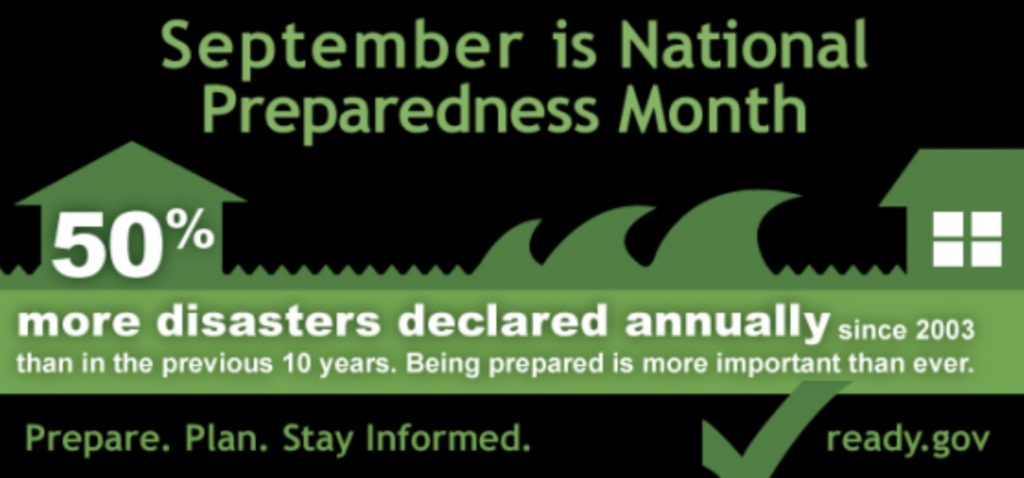Steps to be prepared in case a disaster occurs


MEIGS COUNTY, Ohio – What is your plan if a disaster occurs? Where will you go? How will you get there?
Throughout week one of National Preparedness Month we are focusing on making a plan for disasters and practicing it because “disasters don’t plan ahead, you can.” Planning for a disaster should address multiple areas such as supplies, sheltering, evacuation, and communication. Prior to a disaster occurring all of these items should be discussed not only at home but also at work and with neighbors.
Supply kits can play a vital role in a disaster. These kits can be bought or built and should be able to last an individual 3 days should a disaster occur. Some common items an emergency kit should include are nonperishable foods, water, personal hygiene supplies, phone chargers, a weather radio, fire starters, flashlights, candles, and emergency plan information. Whether you choose to buy or build a kit, always pick what’s best for you and remember you may not have a way to heat food so choose non-perishable foods wisely.
Shelters are another key area in disasters. Always have a second place to shelter in case something happens to your initial shelter location. These shelters should be in safe locations and can include your own home, friend’s or family’s home, and in some situations may be a temporary shelter which has been erected in your community.
Should your area become unsafe or have potential to become unsafe, an evacuation plan will need to be used. This plan should include ways to get out of your shelter, home, and even your community. In When flooding in Meigs County occurs, these evacuation plans may need to be used and even altered due to high water. Evacuation plans also need to address shelter location such as a family member or friends home and different routes should your initial route be blocked.
The final part of your planning needs to be a communication plan. This communication plan should include how to contact not only each other should you become separated, but also friends, family, and neighbors. Each family member should have a list with phone numbers, email addresses, and physical addresses should they need to contact others during a disaster.
Remember a plan is only as good as you make it and no good plan goes unpracticed. For more information on planning for a disaster you can visit www.ready.gov.






